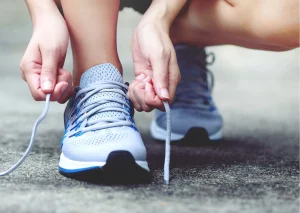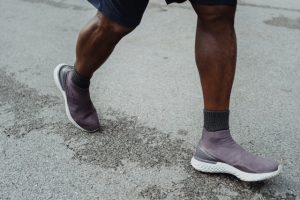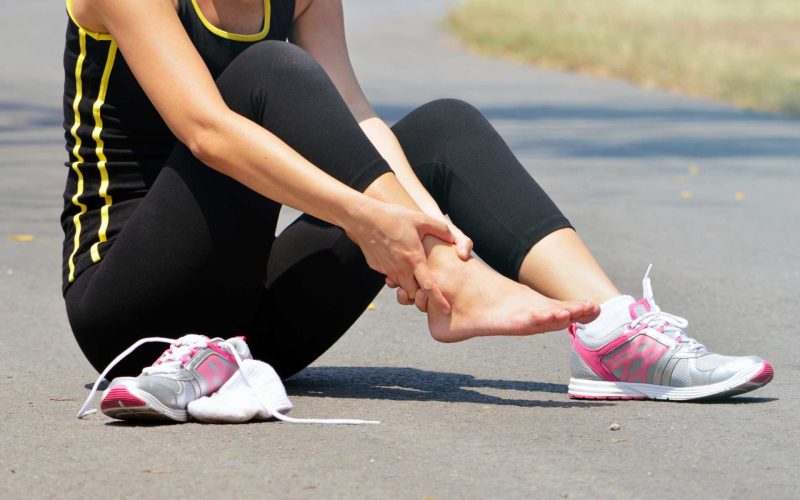Introduction
Ankle sprains are a common injury that can occur during various activities, from everyday walking to high-impact sports. While they can be painful and debilitating, the good news is that many ankle sprains can be prevented with the right strategies and precautions in place. In this comprehensive guide, we’ll delve into the expert-recommended methods for preventing ankle sprains, providing you with the tools and knowledge you need to keep your ankles safe and strong.
Understanding Ankle Sprains
Before we delve into prevention strategies, let’s first understand what exactly an ankle sprain is. An ankle sprain occurs when the ligaments that support the ankle stretch or tear, usually due to sudden twisting or turning motions. This can result in pain, swelling, and difficulty walking, depending on the severity of the sprain.
Types of Ankle Sprains
There are various types of ankle sprains, categorized by the severity of the injury and the affected ligaments. The most common types include:
Grade 1 (Mild)
- Involves stretching or minor tearing of the ligaments.
- Mild pain and swelling, with minimal impact on mobility.
- Typically heals within a few days with rest and ice.
Grade 2 (Moderate)
- Involves partial tearing of the ligaments.
- Moderate pain, swelling, and difficulty bearing weight on the affected ankle.
- May require immobilization with a brace or splint and physical therapy for recovery.
Grade 3 (Severe)
- Involves complete tearing of the ligaments.
- Severe pain, swelling, and instability in the ankle joint.
- Often requires immobilization in a cast or boot and may necessitate surgical intervention for optimal healing.

Prevention Strategies
Now that we have a clear understanding of ankle sprains, let’s explore the top strategies recommended by experts to prevent these injuries from occurring.
1. Strengthening Exercises
One of the most effective ways to prevent ankle sprains is by strengthening the muscles around the ankle joint. Strong muscles provide better support and stability, reducing the risk of injury during physical activity. Incorporate the following exercises into your routine to strengthen the ankles:
a. Calf Raises
- Stand with your feet hip-width apart, holding onto a stable surface for balance.
- Rise up onto the balls of your feet, lifting your heels as high as possible.
- Slowly lower back down to the starting position.
- Repeat for 2-3 sets of 10-15 repetitions.
b. Ankle Circles
- Sit comfortably with your legs extended in front of you.
- Rotate your ankles in a circular motion, first clockwise and then counterclockwise.
- Perform 10-15 circles in each direction, focusing on smooth and controlled movements.
c. Resistance Band Exercises
- Sit on the floor with your legs extended and loop a resistance band around the ball of one foot.
- Hold the ends of the band in each hand and gently flex your foot against the resistance.
- Repeat for 2-3 sets of 10-15 repetitions on each foot.
2. Proper Footwear
The shoes you wear play a significant role in preventing ankle sprains, especially during physical activity or sports. Opt for supportive footwear that provides adequate cushioning and stability for your feet. Consider the following factors when choosing the right shoes:

a. Arch Support
- Look for shoes with good arch support to maintain proper foot alignment and reduce the risk of overpronation or supination.
b. Ankle Support
- Choose shoes with a secure ankle collar or additional ankle support to help stabilize the joint during movement.
c. Shock Absorption
- Select shoes with ample cushioning in the heel and forefoot to absorb impact and reduce strain on the ankles.
3. Balance and Proprioception Training
Improving balance and proprioception (the body’s awareness of its position in space) can also help prevent ankle sprains by enhancing stability and coordination. Incorporate the following exercises into your routine to improve balance and proprioception:
a. Single-Leg Stance
- Stand on one leg with your knee slightly bent and your arms out to the sides for balance.
- Hold the position for 30-60 seconds, then switch to the other leg.
- Repeat for 2-3 sets on each leg, gradually increasing the duration as your balance improves. Explore More About (Fatty Liver and its Solutions)
b. Balance Board Exercises
- Stand on a balance board or wobble board with your feet hip-width apart.
- Shift your weight from side to side or front to back to maintain your balance.
- Start with small movements and gradually increase the difficulty as you become more proficient.

c. Stability Ball Workouts
- Sit on a stability ball with your feet flat on the floor and engage your core muscles for stability.
- Slowly lift one foot off the ground and hold the position for 10-15 seconds.
- Lower the foot back down and repeat on the other side.
- Continue alternating sides for 2-3 sets, focusing on maintaining balance and control.
Prevention Methods Overview
| Prevention Method | Description |
|---|---|
| Strengthening Exercises | Target specific muscles around the ankle to improve support and stability. |
| Proper Footwear | Choose shoes with adequate arch and ankle support, as well as shock-absorbing features. |
| Balance and Proprioception | Enhance balance and coordination through targeted exercises that improve spatial awareness and stability. |
Conclusion
Preventing ankle sprains requires a proactive approach that includes strengthening exercises, proper footwear, and balance training. By incorporating these strategies into your routine, you can reduce the risk of ankle injuries and enjoy a more active and pain-free lifestyle. Remember to listen to your body and seek medical attention if you experience persistent pain or instability in your ankles. With dedication and consistency, you can keep your ankles strong and resilient for years to come.










